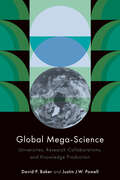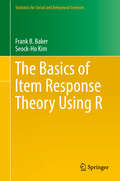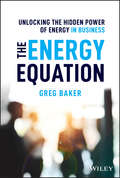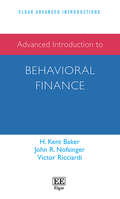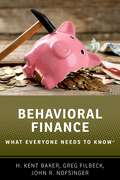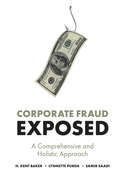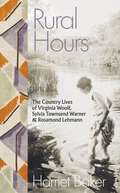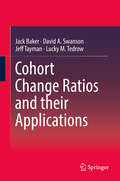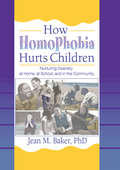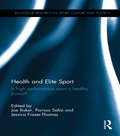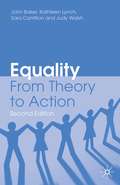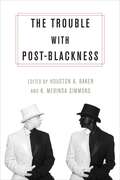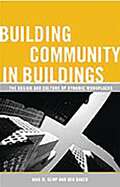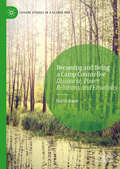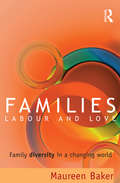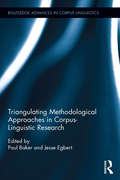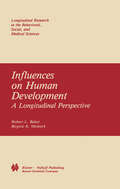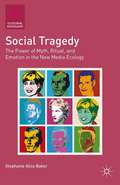- Table View
- List View
Global Mega-Science: Universities, Research Collaborations, and Knowledge Production
by David P. Baker Justin J.W. PowellNever has the world been as rich in scientific knowledge as it is today. But what are its main sources? In accessible and engaging fashion, Global Mega-Science examines the origins of this unprecedented growth of knowledge production over the past hundred and twenty years. David P. Baker and Justin J.W. Powell integrate sociological and historical approaches with unique scientometric data to argue that at the heart of this phenomenon is the unparalleled cultural success of universities and their connection to science: the university-science model. Considering why science is so deeply linked to (higher) educational development, the authors analyze the accumulation of capacity to produce research—and demonstrate how the university facilitates the emerging knowledge society. The age of global mega-science was built on the symbiotic relationship between higher education and science, especially the worldwide research collaborations among networked university-based scientists. These relationships are key for scholars and citizens to understand the past, future, and sustainability of science.
Global Mega-Science: Universities, Research Collaborations, and Knowledge Production
by David P. Baker Justin J.W. PowellNever has the world been as rich in scientific knowledge as it is today. But what are its main sources? In accessible and engaging fashion, Global Mega-Science examines the origins of this unprecedented growth of knowledge production over the past hundred and twenty years. David P. Baker and Justin J.W. Powell integrate sociological and historical approaches with unique scientometric data to argue that at the heart of this phenomenon is the unparalleled cultural success of universities and their connection to science: the university-science model. Considering why science is so deeply linked to (higher) educational development, the authors analyze the accumulation of capacity to produce research—and demonstrate how the university facilitates the emerging knowledge society. The age of global mega-science was built on the symbiotic relationship between higher education and science, especially the worldwide research collaborations among networked university-based scientists. These relationships are key for scholars and citizens to understand the past, future, and sustainability of science.
The Basics of Item Response Theory Using R (Statistics for Social and Behavioral Sciences)
by Frank B. Baker Seock-Ho KimThis graduate-level textbook is a tutorial for item response theory that covers both the basics of item response theory and the use of R for preparing graphical presentation in writings about the theory. Item response theory has become one of the most powerful tools used in test construction, yet one of the barriers to learning and applying it is the considerable amount of sophisticated computational effort required to illustrate even the simplest concepts. This text provides the reader access to the basic concepts of item response theory freed of the tedious underlying calculations. It is intended for those who possess limited knowledge of educational measurement and psychometrics.Rather than presenting the full scope of item response theory, this textbook is concise and practical and presents basic concepts without becoming enmeshed in underlying mathematical and computational complexities. Clearly written text and succinct R code allow anyone familiar with statistical concepts to explore and apply item response theory in a practical way. In addition to students of educational measurement, this text will be valuable to measurement specialists working in testing programs at any level and who need an understanding of item response theory in order to evaluate its potential in their settings.
The Energy Equation: Unlocking the Hidden Power of Energy in Business
by Greg BakerA groundbreaking approach to unlocking the power of energy for professional productivity and business success The Energy Equation provides a new approach to achieving marketplace success by leveraging the internal workings of your business. The energy of your business is part of a physical system. Just like any other form of energy, it can be drained and wasted or be harnessed and optimized. This book offers a revolutionary contribution to management science that can be used to drive change, improve collaboration, enhance performance, strengthen organizational health and agility, and much more. Author Greg Baker, CEO of Advance Consulting—a leading management consulting and professional development firm specializing in the transformation of people, teams, and organizations—shows you how to use “enterprise” energy to dramatically increase professional productivity and enhance business performance. The Energy Equation teaches you how to “see” the energy of your company, enabling you to understand why some things work and others don’t. The traditional “surface-level management” model no longer works in the 21st century; a much deeper view is needed. The Energy Equation will help you unlock the hidden power of energy in your business: Eliminate unnecessary conflict that saps the energy of your business Build business agility, boost employee engagement, and establish a positive culture throughout your organization Optimize your daily business, manage change, and prepare for the future of work View your business through the lens of energy to see what is really happening beneath the surface The Energy Equation is a powerful resource for any person or business seeking to adapt and thrive in the challenging global business environment.
The Energy Equation: Unlocking the Hidden Power of Energy in Business
by Greg BakerA groundbreaking approach to unlocking the power of energy for professional productivity and business success The Energy Equation provides a new approach to achieving marketplace success by leveraging the internal workings of your business. The energy of your business is part of a physical system. Just like any other form of energy, it can be drained and wasted or be harnessed and optimized. This book offers a revolutionary contribution to management science that can be used to drive change, improve collaboration, enhance performance, strengthen organizational health and agility, and much more. Author Greg Baker, CEO of Advance Consulting—a leading management consulting and professional development firm specializing in the transformation of people, teams, and organizations—shows you how to use “enterprise” energy to dramatically increase professional productivity and enhance business performance. The Energy Equation teaches you how to “see” the energy of your company, enabling you to understand why some things work and others don’t. The traditional “surface-level management” model no longer works in the 21st century; a much deeper view is needed. The Energy Equation will help you unlock the hidden power of energy in your business: Eliminate unnecessary conflict that saps the energy of your business Build business agility, boost employee engagement, and establish a positive culture throughout your organization Optimize your daily business, manage change, and prepare for the future of work View your business through the lens of energy to see what is really happening beneath the surface The Energy Equation is a powerful resource for any person or business seeking to adapt and thrive in the challenging global business environment.
Advanced Introduction to Behavioral Finance (Elgar Advanced Introductions series)
by H. K. Baker John R. Nofsinger Victor RicciardiElgar Advanced Introductions are stimulating and thoughtful introductions to major fields in the social sciences, business, and law, expertly written by the world’s leading scholars. Designed to be accessible yet rigorous, they offer concise and lucid surveys of the substantive and policy issues associated with discrete subject areas.Through detailed discussion of the central principles of behavioral finance, this enlightening Advanced Introduction provides a balanced exploration of the broad issues within the field. Chapters explain the continuous development of the discipline and provide a useful differentiation between behavioral finance and standard finance.Key Features:Illustrates the various challenges and opportunities facing behavioral financeProvides clear definitions of key terms within the subject area of behavioral financeInvestigates applications of behavioral finance in financial decision-making, including within corporate financeExplains why blending behavioral and standard approaches would likely improve financial understanding and lead to better decision-makingThis illuminating Advanced Introduction will be valuable for academics, researchers, and practitioners interested in behavioral finance. Students researching behavioral economics, economic psychology, and financial economics will also find it informative.
Behavioral Finance: What Everyone Needs to Know® (What Everyone Needs To Know®)
by H. Kent Baker Greg Filbeck John R. NofsingerPeople tend to be penny wise and pound foolish and cry over spilt milk, even though we are taught to do neither. Focusing on the present at the expense of the future and basing decisions on lost value are two mistakes common to decision-making that are particularly costly in the world of finance. Behavioral Finance: What Everyone Needs to KnowR provides an overview of common shortcuts and mistakes people make in managing their finances. It covers the common cognitive biases or errors that occur when people are collecting, processing, and interpreting information. These include emotional biases and the influence of social factors, from culture to the behavior of one's peers. These effects vary during one's life, reflecting differences in due to age, experience, and gender. Among the questions to be addressed are: How did the financial crisis of 2007-2008 spur understanding human behavior? What are market anomalies and how do they relate to behavioral biases? What role does overconfidence play in financial decision- making? And how does getting older affect risk tolerance?
BEHAVIORAL FINANCE WENK C: What Everyone Needs to Know® (What Everyone Needs To Know®)
by H. Kent Baker John R. Nofsinger Greg FilbeckPeople tend to be penny wise and pound foolish and cry over spilt milk, even though we are taught to do neither. Focusing on the present at the expense of the future and basing decisions on lost value are two mistakes common to decision-making that are particularly costly in the world of finance. Behavioral Finance: What Everyone Needs to KnowR provides an overview of common shortcuts and mistakes people make in managing their finances. It covers the common cognitive biases or errors that occur when people are collecting, processing, and interpreting information. These include emotional biases and the influence of social factors, from culture to the behavior of one's peers. These effects vary during one's life, reflecting differences in due to age, experience, and gender. Among the questions to be addressed are: How did the financial crisis of 2007-2008 spur understanding human behavior? What are market anomalies and how do they relate to behavioral biases? What role does overconfidence play in financial decision- making? And how does getting older affect risk tolerance?
Corporate Fraud Exposed: A Comprehensive and Holistic Approach
by H. Kent Baker Samir Saadi Lynnette PurdaAfter each major corporate scandal, new suggestions for combatting fraud emerge from regulators and industry professionals. Despite changes to guidelines for firms’ corporate governance, augmented protection for whistle blowers, and enhanced cybersecurity measures, evidence documents an alarming increase in the prevalence and severity of corporate fraud. The rapidly changing laws aimed at curbing corporate fraud sometimes lag behind the changing sophistication of fraud schemes. Corporate Fraud Exposed discusses the motivations and drivers of fraud including agency theory, executive compensation, and organizational culture. It examines fraud’s consequences for various firm stakeholders and its spillover effects to other corporations, the political environment, and financial market participants, including those who participate via crowdfunding platforms. This book provides a fresh look at this intriguing but often complex subject. It skillfully blends the contributions of a global array of scholars and practitioners into a single review of some of the most important topics in this area. Given its broad scope, this practical and comprehensive title should be of interest to anyone curious about corporate fraud.
Rural Hours: The Country Lives of Virginia Woolf, Sylvia Townsend Warner and Rosamond Lehmann
by Harriet Baker*A FOYLES TOP TEN READ FOR APRIL*‘A superb portrait of the complex imprint the countryside makes on the life of the mind … A treasure’ Doireann Ní GhríofaIn Rural Hours, Harriet Baker tells the story of three very different women, each of whom moved to the countryside and was forever changed by it. We encounter them at quiet moments – pausing to look at an insect on the windowsill; jotting down a recipe; or digging for potatoes, dirt beneath their nails. Slowly, we start to see transformations unfold: Virginia Woolf, Sylvia Townsend Warner, and Rosamond Lehmann emerge before us as the passionate, visionary writers we know them to be. Following long periods of creative uncertainty and private disappointment, each of Baker's subjects is invigorated by new landscapes, and the daily trials and small pleasures of making a home; slowly, they embark on new experiments in form, in feeling and in living that would resonate throughout the rest of their lives. In the country, each woman finds her path: to convalescence and recovery; to sexual and political awakening; and, above all, to personal freedom and creative flourishing. In graceful, fluid prose, Baker vividly recreates these overlooked episodes, revealing how ‘rural hours’ defined the lives of three pioneering writers. In the end, she shows, their example is an invitation to us all: to recognize the radical and creative potential of rural places, and find new enchantment in the rituals of each day.‘Warm, perceptive, eloquent … Like Baker’s protagonists in their countryside boltholes I felt “socketed” by this book. I know I’ll return to it again and again’ Lauren Elkin‘A meditative exploration of renewal, visionariness, grievous loss, and love – cool and passionate, fragile and enduring’ David Hayden
Cohort Change Ratios and their Applications
by Jack Baker David A. Swanson Jeff Tayman Lucky M. TedrowThis textbook focuses on the cohort change ratio (CCR) method. It presents powerful, yet relatively simple ways to generate accurate demographic estimates and forecasts that are cost efficient and require fewer resources than other techniques. The concepts, analytical frameworks, and methodological tools presented do not require extensive knowledge of demographics, mathematics, or statistics. The demographic focus is on the characteristics of populations, especially age and sex composition, but these methods are applicable estimating and forecasting other characteristics and total population. The book contains more traditional applications such as the Hamilton-Perry method, but also includes new applications of the CCR method such as stable population theory. Real world empirical examples are provided for every application; along with excel files containing data and program code, which are accessible online. Topics covered include basic demographic measures, sources of demographic information, forecasting and estimating (both current and historical) populations, modifications to current methods, forecasting school enrollment and other characteristics, estimating life expectancy, stable population theory, decomposition of the CCR into its migration and mortality components, and the utility of the CCR. This textbook is designed to provide material for an advanced undergraduate or graduate course on demographic methods. It can also be used as a supplement for other courses including applied demography, business and economic forecasting and market research.
How Homophobia Hurts Children: Nurturing Diversity at Home, at School, and in the Community
by Jean M BakerHomophobia hurts kids. Explore ways to minimize that trauma!This book illustrates the ways that children growing up to be gay are harmed by homophobia before anyone, including themselves, even knows they are gay. This compelling and sympathetic volume describes many simple ways that these children can be helped to understand that they can grow up to lead normal lives, with hopes and dreams for their futures. How Homophobia Hurts Children: Nurturing Diversity at Home, at School, and in the Community brings home the voices of these children. They describe their experiences to show how they came to the frightening recognition that they are part of a group held in disregard by the rest of society, even sometimes by their own families.Dr. Jean M. Baker, the author of How Homophobia Hurts Children: Nurturing Diversity at Home, at School, and in the Community is a clinical psychologist and the mother of two gay sons. In this book she shares her experience as both psychologist and mother to show how the myths and fallacies about homosexuality have influenced parents, schools, churches, and lawmakers to send children the cruel message that if they are gay, they are not normal and will not be able to lead normal lives. In this unique volume you'll find: a chapter on identity development, following the Eriksonian model interviews with high school students who are self-identified as gay firsthand descriptions of the harassment and victimization of those perceived as gay in schools research on how victimization at school affects gay youths a discussion of the relatively new phenomenon of gay/straight alliances (gay support groups or clubs) a chapter on transgender identity with interviews with four transsexual persons who describe their personal childhood experiences and their transition processThe focus of How Homophobia Hurts Children: Nurturing Diversity at Home, at School, and in the Community, centering on the social and familial experiences of children who will grow up to be gay but have not yet come to that realization, is unique. But beyond that, this book also explains how homophobia affects the attitudes of non-gay children by leading them to believe that it is acceptable to mistreat homosexuals. Finally, specific suggestions are made for changes in parenting and changes in school/classroom practices that could help prevent the harm that is inflicted upon so many of our gay children. Everyone who comes in contact with children on their way to becoming gay/lesbian/bisexual/transgender adults needs to read this book!
How Homophobia Hurts Children: Nurturing Diversity at Home, at School, and in the Community
by Jean M BakerHomophobia hurts kids. Explore ways to minimize that trauma!This book illustrates the ways that children growing up to be gay are harmed by homophobia before anyone, including themselves, even knows they are gay. This compelling and sympathetic volume describes many simple ways that these children can be helped to understand that they can grow up to lead normal lives, with hopes and dreams for their futures. How Homophobia Hurts Children: Nurturing Diversity at Home, at School, and in the Community brings home the voices of these children. They describe their experiences to show how they came to the frightening recognition that they are part of a group held in disregard by the rest of society, even sometimes by their own families.Dr. Jean M. Baker, the author of How Homophobia Hurts Children: Nurturing Diversity at Home, at School, and in the Community is a clinical psychologist and the mother of two gay sons. In this book she shares her experience as both psychologist and mother to show how the myths and fallacies about homosexuality have influenced parents, schools, churches, and lawmakers to send children the cruel message that if they are gay, they are not normal and will not be able to lead normal lives. In this unique volume you'll find: a chapter on identity development, following the Eriksonian model interviews with high school students who are self-identified as gay firsthand descriptions of the harassment and victimization of those perceived as gay in schools research on how victimization at school affects gay youths a discussion of the relatively new phenomenon of gay/straight alliances (gay support groups or clubs) a chapter on transgender identity with interviews with four transsexual persons who describe their personal childhood experiences and their transition processThe focus of How Homophobia Hurts Children: Nurturing Diversity at Home, at School, and in the Community, centering on the social and familial experiences of children who will grow up to be gay but have not yet come to that realization, is unique. But beyond that, this book also explains how homophobia affects the attitudes of non-gay children by leading them to believe that it is acceptable to mistreat homosexuals. Finally, specific suggestions are made for changes in parenting and changes in school/classroom practices that could help prevent the harm that is inflicted upon so many of our gay children. Everyone who comes in contact with children on their way to becoming gay/lesbian/bisexual/transgender adults needs to read this book!
Health and Elite Sport: Is High Performance Sport a Healthy Pursuit? (Routledge Research in Sport, Culture and Society)
by Joe Baker Parissa Safai Jessica Fraser-ThomasHealth and Elite Sport is the first book to critically examine the relationship between participation in high performance sport and health outcomes. Drawing on theory and empirical data from a wide range of disciplines, including sociology, developmental psychology, epidemiology, and physical education, the book explores the benefits and detriments of participation in elite sport for both individuals (athletes, coaches, spectators) and communities. Written by a team of leading international sport researchers, the book examines key issues including: Talent identification and young athletes Abuse in sport Positive youth development through sport Athlete health in periods of transition Health, sport and the family Health in professional sport The Olympics, Paralympics and public health Long term effects of participation in elite sport Highlighting the connections and contradictions between high performance sport and health, the book also discusses the clear and important implications for our socio-cultural, political and developmental understanding of sport. Health and Elite Sport is fascinating and important reading for all students and researchers with an interest in youth sport, sports development, sport policy, sports coaching, exercise and health, physical education, the sociology of sport, or the sociology of health.
Equality: From Theory to Action
by John Baker K. Lynch Sara Cantillon Judy WalshHow can egalitarian ideals be put into action? This ground-breaking book sets out a new interdisciplinary model for equality studies. Integrating normative questions about the ideal of equality with empirical issues about the nature of inequality, it applies a new framework to a wide range of contemporary inequalities. Proposing far-reaching changes in the economy, politics, law, education and research practices, it sets out innovative political strategies for achieving those aims. It is an invaluable resource for both academics and activists.
Health and Elite Sport: Is High Performance Sport a Healthy Pursuit? (Routledge Research in Sport, Culture and Society)
by Joseph Baker Parissa Safai Jessica Fraser-ThomasHealth and Elite Sport is the first book to critically examine the relationship between participation in high performance sport and health outcomes. Drawing on theory and empirical data from a wide range of disciplines, including sociology, developmental psychology, epidemiology, and physical education, the book explores the benefits and detriments of participation in elite sport for both individuals (athletes, coaches, spectators) and communities. Written by a team of leading international sport researchers, the book examines key issues including: Talent identification and young athletes Abuse in sport Positive youth development through sport Athlete health in periods of transition Health, sport and the family Health in professional sport The Olympics, Paralympics and public health Long term effects of participation in elite sport Highlighting the connections and contradictions between high performance sport and health, the book also discusses the clear and important implications for our socio-cultural, political and developmental understanding of sport. Health and Elite Sport is fascinating and important reading for all students and researchers with an interest in youth sport, sports development, sport policy, sports coaching, exercise and health, physical education, the sociology of sport, or the sociology of health.
The Trouble with Post-Blackness
by Houston Baker Jr. K. Merinda SimmonsAn America in which the color of one's skin no longer matters would be unprecedented. With the election of President Barack Obama in 2008, that future suddenly seemed possible. Obama's rise reflects a nation of fluid populations and fortunes, a society in which a biracial individual could be embraced as a leader by all. Yet complicating this vision are shifting demographics, rapid redefinitions of race, and the instant invention of brands, trends, and identities that determine how we think about ourselves and the place of others. This collection of original essays confronts the premise, advanced by black intellectuals, that the Obama administration marked the start of a "post-racial" era in the United States. While the "transcendent" and post-racial black elite declare victory over America's longstanding codes of racial exclusion and racist violence, their evidence relies largely on their own salaries and celebrity. These essays strike at the certainty of those who insist that life, liberty, and the pursuit of happiness are now independent of skin color and race in America. They argue, signify, and testify that "post-blackness" is a problematic mythology masquerading as fact—a dangerous new "race science" motivated by black transcendentalist individualism. Through rigorous analysis, these essays expose the idea of a post-racial nation as a pleasurable entitlement for a black elite, enabling them to reject the ethics and urgency of improving the well-being of the black majority.
Building Community in Buildings: The Design and Culture of Dynamic Workplaces
by Ken Baker Jana M. KempBuilding Community in Buildings takes us on a fascinating journey through workplaces large and small, old and new, traditional and contemporary, to explore the dynamic relationships between people and the structures in which they work. Noting that a child born today will spend 90 percent of his or her life inside, Jana Kemp and Ken Baker integrate insights from management and building design to reveal new understandings about workplace productivity and performance. Showcasing dozens of examples—from office buildings to libraries to hospitals—the authors highlight innovative practies that utilize space to promote creativity and collaboration, improve morale and motivation, and ensure employee health and safety. Featuring over a dozen photographs, practical recommendations, and the tools to conduct a workplace design survey in your own organization, Building Community in Buildings ultimately demonstrates that by investing in spaces that support people needs, companies will strengthen bottom-line results.Building Community in Buildings takes us on a fascinating journey through workplaces large and small, old and new, traditional and contemporary, to explore the dynamic relationships between people and the structures in which they work. Consider that in the 1950s, average North Americans spent approximately 50 percent of their time in buildings, compared to a child born today, who will spend 90 percent of his or her life inside. Clearly and increasingly, our social and cultural relationships are deeply influenced by the physical spaces in which they are created.Jana Kemp and Ken Baker integrate insights from management and building design to reveal new understandings about workplace productivity and performance. Showcasing dozens of examples—from the redesign of the Hood River Library in Oregon (with input from front-line employees) to the creation of open, naturally-lit spaces in Lockheed Building 157 (increasing employee productivity by 15%), the authors highlight innovative practices that utilize space to promote creativity and collaboration, improve morale and motivation, and ensure employee health and safety. They also explore the pros and cons of virtual workplaces, in which people are connected electronically but not physically, and trace the impact and influences of such trends as the green building movement. Featuring over a dozen photographs, practical recommendations, and the tools to conduct a workplace design survey in your own organization, Building Community in Buildings ultimately demonstrates that by investing in spaces that support people needs, companies will strengthen bottom-line results.
Becoming and Being a Camp Counsellor: Discourse, Power Relations and Emotions (Leisure Studies in a Global Era)
by Mandi BakerThis book explores the complexities of the recreational summer camp experience and its reliance on the expertise and emotion work of young people. Drawing on post-structural theory, Baker illustrates the discourses, power relations and emotional demands that shape camp counsellor employment experiences and well-being. Through analysis of everyday experiences and interactions, Baker unpicks the power nexus between counsellors, campers, peers and camp management, offering a deeper understanding of camp counsellor employment and the challenges for camp employees and employers. As such, this book raises a call for camp researchers and industry leaders to engage in rethinking how camp counsellor roles are understood, shaped and embodied, and how they might be ethically supported through reflexive management practices. Becoming and Being a Camp Counsellor will be of interest to scholars and students across the fields of leisure, outdoor recreation, youth studies, and sociology.
Families, Labour and Love: Family diversity in a changing world
by Maureen BakerWe think of our family life as very personal, but in fact it is shaped by influences well beyond our control. Families, Labour and Love identifies the ways in which family and personal life in three 'settler' societies - Australia, New Zealand and Canada - has been shaped by colonisation, immigration, globalisation, demographic changes, law and policy.Baker shows that these three countries, each a former colony, developed similar family trends and similar family policies. Strongly gendered patterns of paid and unpaid work played a major role in family life. The family practices of indigenous people were largely overlooked, as were those of recent immigrant groups. However local conditions also produced significant differences in family experiences among the three countries.Richly illustrated with examples, comparative data and textual sources, Families, Labour and Love provides a broad-ranging analysis of the family which will appeal to students, researchers and policy-makers.Maureen Baker outlines with great clarity the diversity of families and the way in which they are shaped by historical and cultural forces. The focus on Australia, New Zealand and Canada is not only refreshing but throws into sharp relief the impact on contemporary families of the colonial experience, industrialisation, large scale immigration and globalisation.David de Vaus, La Trobe University
Families, Labour and Love: Family diversity in a changing world
by Maureen BakerWe think of our family life as very personal, but in fact it is shaped by influences well beyond our control. Families, Labour and Love identifies the ways in which family and personal life in three 'settler' societies - Australia, New Zealand and Canada - has been shaped by colonisation, immigration, globalisation, demographic changes, law and policy.Baker shows that these three countries, each a former colony, developed similar family trends and similar family policies. Strongly gendered patterns of paid and unpaid work played a major role in family life. The family practices of indigenous people were largely overlooked, as were those of recent immigrant groups. However local conditions also produced significant differences in family experiences among the three countries.Richly illustrated with examples, comparative data and textual sources, Families, Labour and Love provides a broad-ranging analysis of the family which will appeal to students, researchers and policy-makers.Maureen Baker outlines with great clarity the diversity of families and the way in which they are shaped by historical and cultural forces. The focus on Australia, New Zealand and Canada is not only refreshing but throws into sharp relief the impact on contemporary families of the colonial experience, industrialisation, large scale immigration and globalisation.David de Vaus, La Trobe University
Triangulating Methodological Approaches in Corpus Linguistic Research (Routledge Advances in Corpus Linguistics)
by Paul Baker Jesse EgbertContemporary corpus linguists use a wide variety of methods to study discourse patterns. This volume provides a systematic comparison of various methodological approaches in corpus linguistics through a series of parallel empirical studies that use a single corpus dataset to answer the same overarching research question. Ten contributing experts each use a different method to address the same broadly framed research question: In what ways does language use in online Q+A forum responses differ across four world English varieties (India, Philippines, United Kingdom, and United States)? Contributions will be based on analysis of the same 400,000 word corpus from online Q+A forums, and contributors employ methodologies including corpus-based discourse analysis, audience perceptions, Multi-Dimensional analysis, pragmatic analysis, and keyword analysis. In their introductory and concluding chapters, the volume editors compare and contrast the findings from each method and assess the degree to which ‘triangulating’ multiple approaches may provide a more nuanced understanding of a research question, with the aim of identifying a set of complementary approaches which could arguably take into account analytical blind spots. Baker and Egbert also consider the importance of issues such as researcher subjectivity, type of annotation, the limitations and affordances of different corpus tools, the relative strengths of qualitative and quantitative approaches, and the value of considering data or information beyond the corpus. Rather than attempting to find the ‘best’ approach, the focus of the volume is on how different corpus linguistic methodologies may complement one another, and raises suggestions for further methodological studies which use triangulation to enrich corpus-related research.
Triangulating Methodological Approaches in Corpus Linguistic Research (Routledge Advances in Corpus Linguistics)
by Paul Baker Jesse EgbertContemporary corpus linguists use a wide variety of methods to study discourse patterns. This volume provides a systematic comparison of various methodological approaches in corpus linguistics through a series of parallel empirical studies that use a single corpus dataset to answer the same overarching research question. Ten contributing experts each use a different method to address the same broadly framed research question: In what ways does language use in online Q+A forum responses differ across four world English varieties (India, Philippines, United Kingdom, and United States)? Contributions will be based on analysis of the same 400,000 word corpus from online Q+A forums, and contributors employ methodologies including corpus-based discourse analysis, audience perceptions, Multi-Dimensional analysis, pragmatic analysis, and keyword analysis. In their introductory and concluding chapters, the volume editors compare and contrast the findings from each method and assess the degree to which ‘triangulating’ multiple approaches may provide a more nuanced understanding of a research question, with the aim of identifying a set of complementary approaches which could arguably take into account analytical blind spots. Baker and Egbert also consider the importance of issues such as researcher subjectivity, type of annotation, the limitations and affordances of different corpus tools, the relative strengths of qualitative and quantitative approaches, and the value of considering data or information beyond the corpus. Rather than attempting to find the ‘best’ approach, the focus of the volume is on how different corpus linguistic methodologies may complement one another, and raises suggestions for further methodological studies which use triangulation to enrich corpus-related research.
Influences on Human Development: A Longitudinal Perspective (Longitudinal Research in the Behavioral, Social and Medical Studies #4)
by R.L. Baker B.R. Mednick University of CaliforniaThis book is the product of the efforts of a number of people dating back to 1956, when Professor T. Kemp, then head of the University Institute for Human Genetics in Copenhagen, proposed a study on the importance of x-ray irradiation in pregnant women. Under the guidance of Professors Dyhre Trolle and Preben Plum of the Uni versity Hospital in Copenhagen, the investigation was expanded to deal with prenatal and perinatal factors of importance for the development of the infant. The corpus of medical data that resulted from these efforts was collected and organized by Drs. Bengt Zachau-Christiansen and Aage Villumsen. The project's birth cohort included all deliveries that took place at the State University Hospital, Rigshospitalet, Copenhagen, over a two-year period from 1959 to 1961. As part of the perinatal study, the mothers and children were subjected to regular and thorough medical examinations during pregnancy and through the first year of the child's life. The detailed data from these examinations, as well as information about treatment administered, were systematically collected and coded.
Social Tragedy: The Power of Myth, Ritual, and Emotion in the New Media Ecology (Cultural Sociology)
by S. BakerA social tragedy is a collective representation of injustice. Baker demonstrates how social tragedies facilitate moral action and discusses a series of contemporary case studies – the death of Princess Diana, Zinédine Zidane's 2006 World Cup scandal, KONY 2012 – to examine their social and political effects.
